 |
| Dining at TOSEA’s Camp Cecil is always festive, no matter the occasion. Photo by Gregory Ross photography. |
The United States celebrates Thanksgiving tomorrow, and we have feasting on the brain! This week, we’ll explore more festive dishes (with linked recipes!) treasured by the cultures represented by the Kusini Collection. We hope you enjoy this tasty read and have a wonderful holiday!
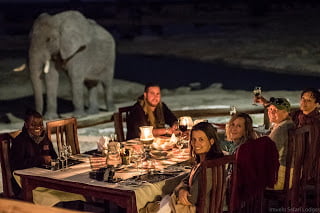 |
| Feasts with Imvelo are amazing – delicious and eventful! |
Imvelo Safari Lodges: Every day on safari is something of a celebration – of nature, life and vacation! Imvelo Safari Lodges is happy to serve some of Zimbabwe’s traditional celebratory foods on request. We love trying local food, and Zimbabwe’s is delicious, so we highly recommend it! A traditional celebration in Zimbabwe would almost always include sadza & nyama, which is meat served with a stiff porridge made of finely ground white maize. Food and drink served at a celebration varies depending on the occasion, status of the attendees, as well as their ethnic grouping. For recipes for a traditional Zimbabwean feast, visit our blog!
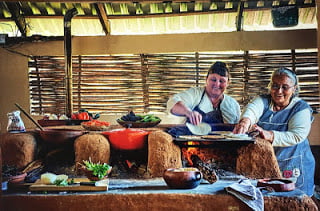 |
| Preparing bacalao is a multi-day process, but is a must for Noche Buena |
Todos Santos Eco Adventures: There is perhaps no more iconic food for Christmas celebrations around Mexico than bacalao. When families gather on the Noche Buena (Dec 24) to socialize, play games, drink and eat, this traditional dish is served at midnight. Originally from Spain, Mexican families have made it their own. Iker Algorri, the talented chef from Los Colibris Casitas in Todos Santos, ordered bacalao when traveling through Spain this year – he was astounded by the difference (and secretly admitted he prefers the Mexican version!). Thanks to Iker and Bryan from Todos Santos Eco Adventures, we’re sharing tips to prepare it on our blog!
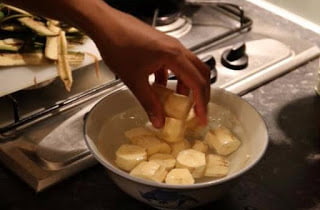 |
| Matoke (cooked, unripe bananas) are reminiscent of potatoes (only better!) |
Albatros Travel: One popular celebratory dish in Tanzania is matoke, a meal of cooked, unripe bananas, but not at all like the bananas we have here in North America. While the dish is popular throughout East Africa, the Tanzanians have their own style of preparation in that they add beans to the dish along with some cow meat, which must contain a piece that is full of fat to flavor the food. Another much loved Tanzanian food is makande – a mixture of maize, beans and coconut milk cooked together. Learn how to make these delicious dishes with recipes from Albatros Travel.
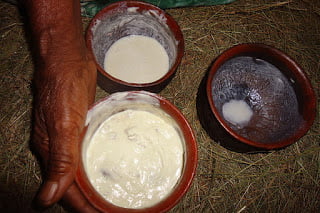 |
| Eshabwe is typically served in a clay bowl (orwabya) |
Classic Africa Safaris: Eshabwe is a dish that originated with the Bahima people of Ankole in western Uganda, though now it’s enjoyed throughout the country for special ceremonies or occasions. It began as a traditional wedding delicacy enjoyed by the groom and his father during the introduction ceremony (Kuhingira). However, this has changed and eshabwe is served like any other dish to everyone. Eshabwe is served as a condiment with the main course alongside millet bread (karo). Learn how to make this uniquely Ugandan condiment with this recipe from Classic Africa Safaris.
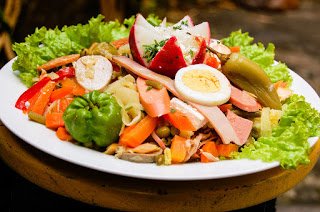 |
| Recipes for fiambre vary, but all are long on ingredients and taste |
Maya Trails: Day of the Dead (DOD) celebrations throughout Latin America have myriad activities including feasting. Fiambre is a uniquely Guatemalan dish served only for the November 1st holiday. Every family’s recipe for this cold salad is different, but two things are consistent – the ingredients list is lengthy (up to 50!), and it takes multiple days to prepare. The team at Maya Trails enjoys the DOD festivities in Sumpango, Guatemala. Accessible from Antigua and Lake Atitlan, Sumpango is the perfect locale for travelers to witness Guatemala’s DOD traditions including a beautiful kite flying ceremony symbolizing both life and death. Contact Adriana to learn more.
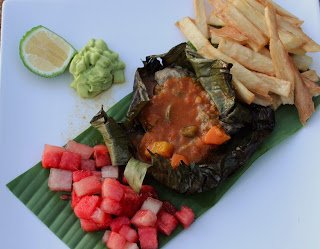 |
| Fresh fish is a feasting favorite on Pemba island |
The Manta Resort: Residents of Tanzania’s spice islands celebrate the gifts from the sea every day. One of the most popular dishes consumed for both holidays and every day is fish cooked in banana leaves. It is an island specialty, and a favorite of almost everyone. The fish that are most common are dorado, tuna, red snapper and yellow snapper! As for spices and herbs (these are the spice islands!), cardamom, ginger, cinnamon, black pepper, chili, nutmeg, cloves, turmeric and lemongrass are the most commonly used. All of these exotic spices are locally farmed on Pemba Island. For a taste of the spice islands, a visit to The Manta Resort is in order!



Leave A Comment
You must be logged in to post a comment.